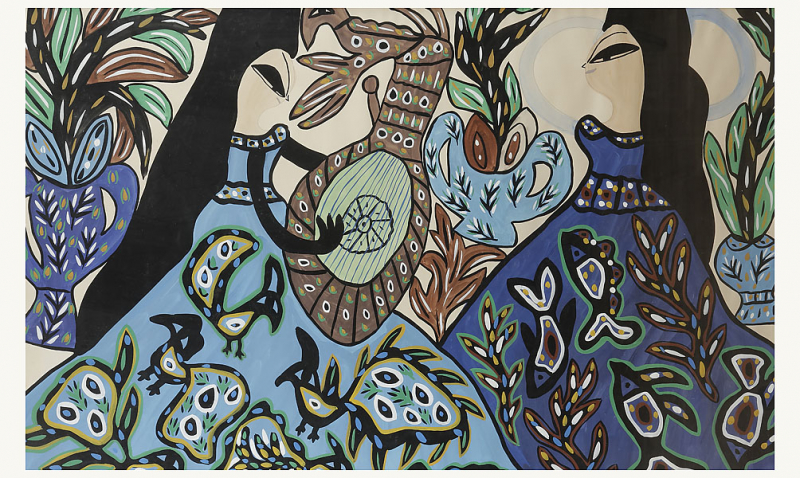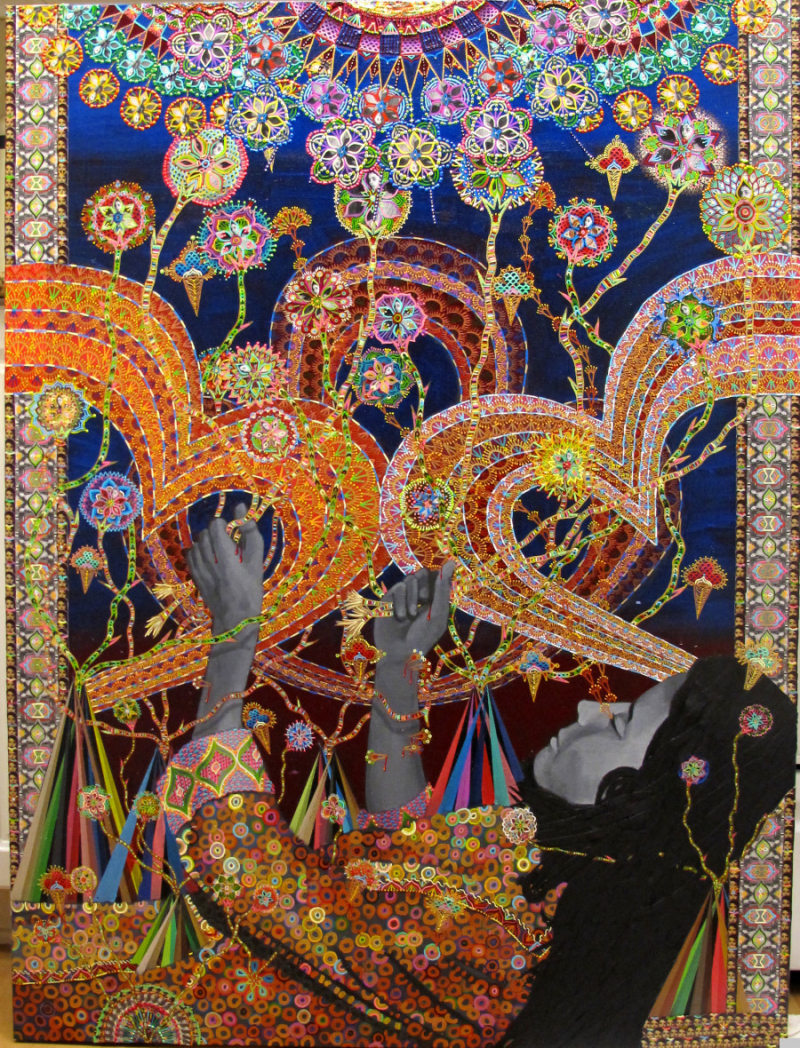Visual arts
Artists in the early half of the twentieth century mostly recovered forms and patterns introduced - or enforced - by an imperialist French power. The question of how to reappropriate one's own history is a recurring theme in Algerian contemporary art, reflecting on the profound societal transformations that the country has through. Artists seek to create a successful introspective work in which identity duality creates a dynamic that overcomes "orientalism" and exotism. The main stake is for the artist and the viewer to reclaim the freedom of expression and interpretation. Boukerche, Benaboura, Ali Ali Khodja, Yelles, and Baya were among the most prominent artists of the time.
From those who lived it to those who utilize it as a legacy, the vast majority of artists embrace the theme of the independence fight. Artists are concerned with the society they live in and protest the segregation, racism, and injustice that split groups in colonial Algeria. They are influenced by all of the artistic and ideological movements that defined the first half of the twentieth century.
Algerian artists reunited with a part of their historical and cultural heritage, particularly the Berber culture and language. Following the Berber Spring in 1988, there was a lot of focus on Berber culture and identity revendications, which had an impact on cultural production. Despite a rise of political violence after the war of independence, where the hegemony of Arabic culture and language tended to encroach on Berber culture, the plastic traditions of popular signals were able to survive. Aouchem builds on this long heritage.
Since the 1980s, there has been a revival, as well as a kind of "naivety," in an attempt to move beyond the tragedy of the war and address fresh modern challenges. A new generation of Moroccan artists has emerged. A big percentage is educated in Europe. Local and Diaspora artists experiment with new techniques and face the challenges of a globalized art industry. They are fusing multiple aspects of their identity, which are defined by their status as first or second generation immigrants. They approach themes that are relevant to the Arab world from the eyes of a "outsider."









